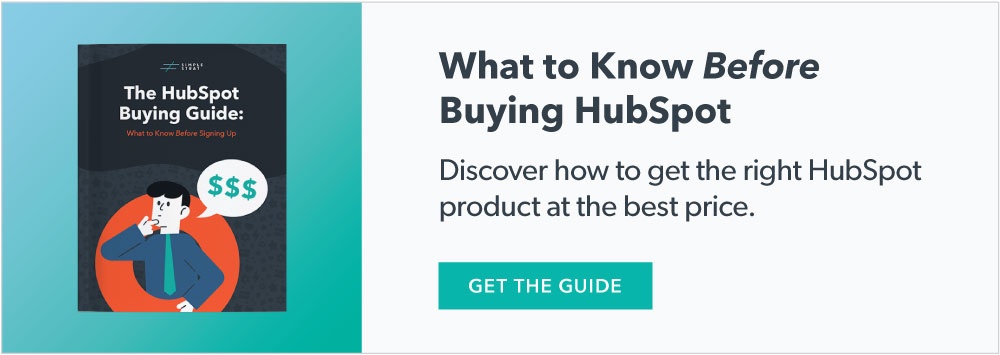If you’re not using AI to increase your sales team’s productivity, you’re going to fall behind. That said, HOW you use AI in sales matters just as much as whether or not you’re using it.
New AI tools are more than just an opportunity to send low-effort outreach emails at higher scale: they’re giving you a chance to make your outreach more personal, more tactful, and more effective, with the limited bandwidth you have. If we’re looking at AI for SDRs for example, these tools can automate routine tasks like drafting an email or qualifying a lead, or even using sentiment analysis to more quickly define the best way to approach a lead.
But there’s a dangerous temptation to let AI take the reins on the wrong things. To stay effective, sales needs to remain people-driven. There’s a wave right now of marketers and sales reps focusing on quantity of messaging instead of quality, scaling outreach but sacrificing the ability to connect.
Thankfully, staying people-driven is more possible than ever, so long as you’re deliberate about it. This is because automation and AI are reducing the workload for repetitive tasks like research and outreach, giving sales teams the ability to focus more on building genuine relationships.
Using AI to eliminate busywork means we can spend more time creating those personal connections that move the needle — especially in a world where prospects are putting their walls up against the bombardment of generic sales outreach.
Sales and AI: making sales teams more productive
The sales process creates loads of data (like emails, calls, and videos) which used to take a lot of human effort to dig through. But generative AI can understand it, quickly and easily. Generative AI can be incredibly helpful for sales teams, but needs to fit into the team's daily routine to be leveraged effectively.
Between using AI in our sales efforts, and speaking with dozens of sales leaders on the topic, here are some of the most common use cases you should take advantage of, if you want to drive productivity.
- Sorting emails at scale: instead of spending hours reading through emails, AI can quickly sort and highlight the important ones, telling you what your customers are really interested in.
- Summarizing calls and extracting key points: tools like Zoom and HubSpot can record calls and meetings, allowing sales reps to review them later. AI can even pull out key action items and quotes.
- Analyzing calls for buying indicators: with a recording or transcript, an AI tool can even extract the words or phrases used in the call and, over time, figure out what language (from either the seller and buyer) can best predict buying intent.-
- Combining generative AI and sales enablement: by analyzing past performance and identifying areas of improvement, generative AI can create custom training materials and exercises that target an individual's specific needs. Sales managers can use AI to give their teams tips and tricks that are just for the individual, without having to listen to every conversation
- Understanding customers better: AI can help sales teams understand what your customers really want by looking at all the data you've got on them, from data points in a CRM to AI-generated meeting notes. It can link things together to give you a clearer picture of what to offer them, and how.
- Data enrichment: AI can automatically populate your CRM with essential information like phone numbers, locations, and job titles.
- Data input automation: with features like mobile business card scanners and data enrichment in sales hubs, manual data entry into CRM is becoming a thing of the past.
- Faster email personalization: Hubspot’s AI assistant can write the skeleton of emails for you, and then you simply save that as a template to refer to each time that scenario comes up, updating and personalizing accordingly.
HubSpot AI Tools: Using HubSpot Content Assistant
The improvements don’t have to stop there. Having the discipline to say “what did I do today that could have been automated or started with AI?” is a good way to identify new ways to increase productivity.
This last use case — writing sales emails more quickly — is more popular right now, and it allows you to incorporate more personalization into the email much faster by feeding relevant data into the request. This can seem more natural than templates and still be done at scale, but its future effectiveness is uncertain…
AI means prospects will be more guarded
There’s a strange feeling you get when you can’t tell if the person you’re chatting with is a real person or not. For many people, it’s deeply unsettling, and they feel distrustful when they suspect they’re interacting with a “machine.” Being on the receiving end of this can seem a bit like a Black Mirror episode, and not one of the happy ones.
For reasons like this, more people will have their guard up and will always be asking “is this a human or AI” when getting a sales email or call (yes, even voice cloning is starting to take hold in sales).
Higher call volume leads to higher defenses
On top of all this, AI will soon allow the average salesperson to make hundreds of calls a day, but consider for a second what that means: the average prospect is going to get ten times more calls each week.
It’s worse for email: prospects are already getting inundated with more cold emails than ever, with messaging that is more personalized than mass-produced emails have ever been, thanks to AI and tons of other tools. Is the difference enough to move the needle though? (Check out the Marketing Deconstructed podcast to hear more about this).
These factors translate to people becoming even more guarded against sales outreach — not just from the “human or machine” question, but because nobody has time to deal with that many unsolicited calls or emails.
This is assuming they ever answer the phone at all, with all the robocalls Americans get every day.
Phone software updates will continue to block low-effort, AI-based calling
Call screening services (like the ones added to Android phones a few years ago) force unknown callers to state their name and reason for calling, which tends to block out robocalls. These features are becoming more prevalent as Apple has started rolling out a similar feature on iPhones.
AI is raising the standard for what prospects expect from a business
There’s already AI that tells you which opening lines to use, or which tone of voice, to get the results. Research into customers and businesses has never been easier.
And yet, most salespeople are still sending emails with fake personalization. People are so desensitized to fill-in-the-blank messaging that tossing in a prospect’s name and company into a boilerplate email just doesn’t cut it anymore. These traditional copypasta outreach emails are easy to spot and are a great way to get your domain marked as spam.
This problem will probably get a lot worse before it gets better, but AI has the potential to help you maximize personalization by cutting down on a lot of the busywork.
Check whether your tech stack can take full advantage of AI
Success with AI in sales requires a strong system and clear processes, where your data is both organized and consolidated. A platform like HubSpot makes this easy by housing everything in one place, letting you more easily integrate AI into your sales strategy.
If you want to leverage AI for better sales productivity and your current system might not cut it, go check out the HubSpot buying guide.


